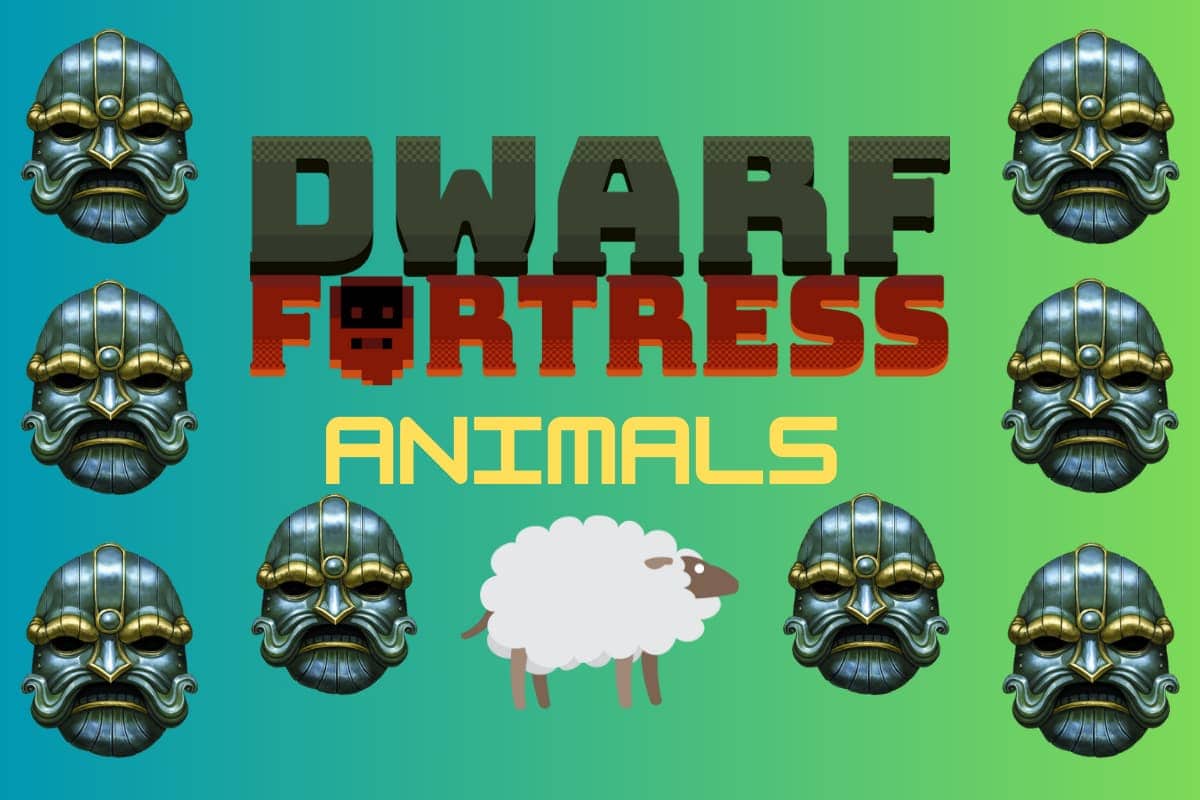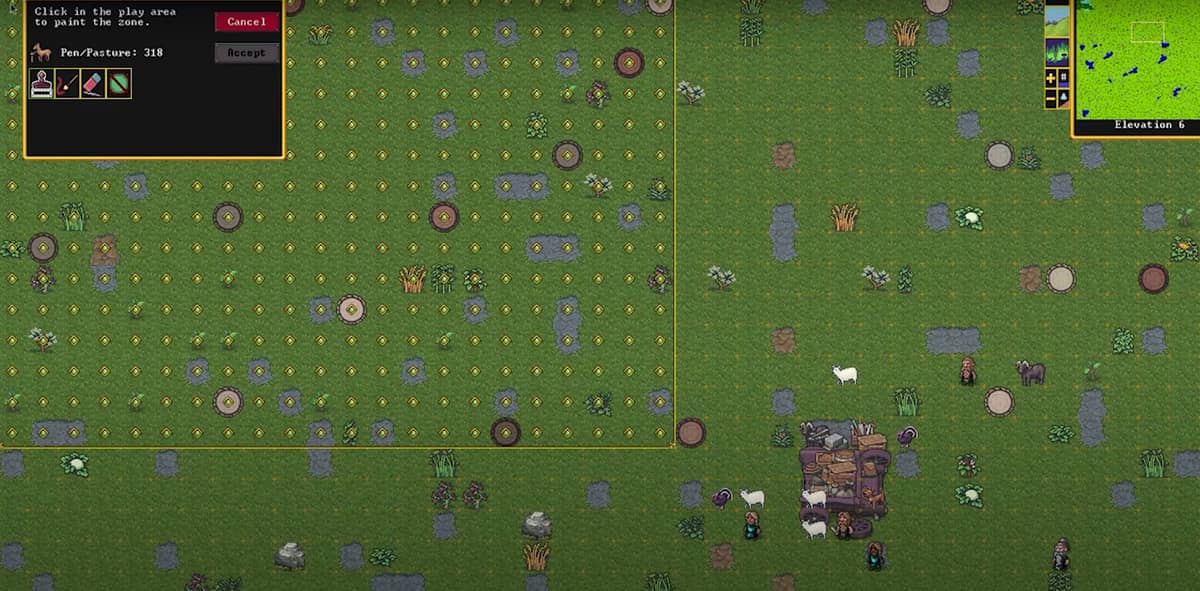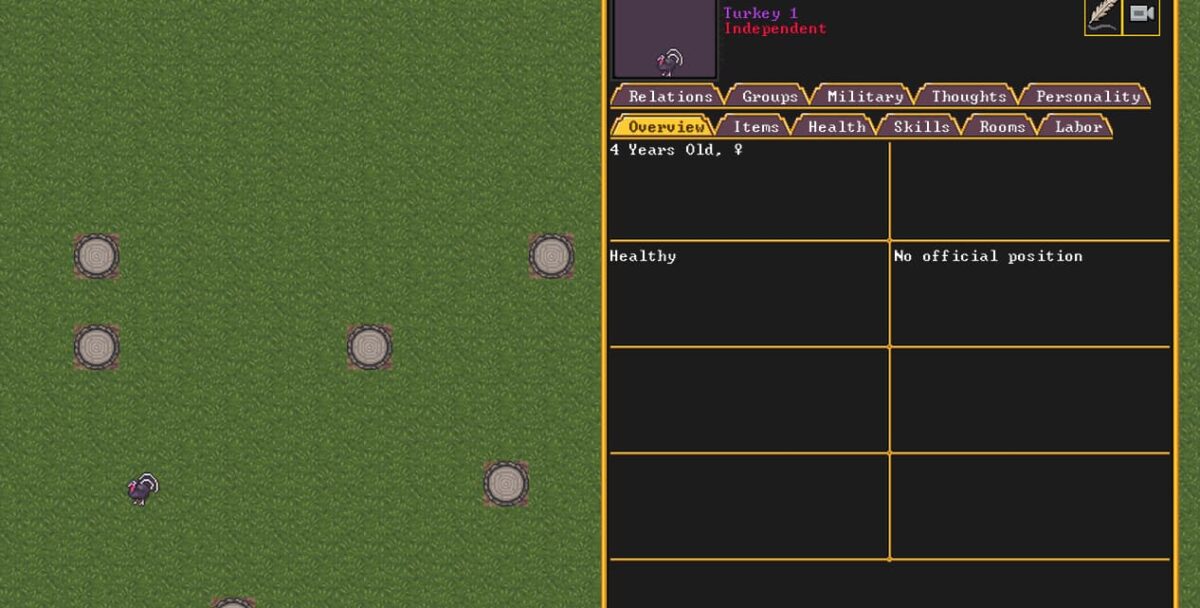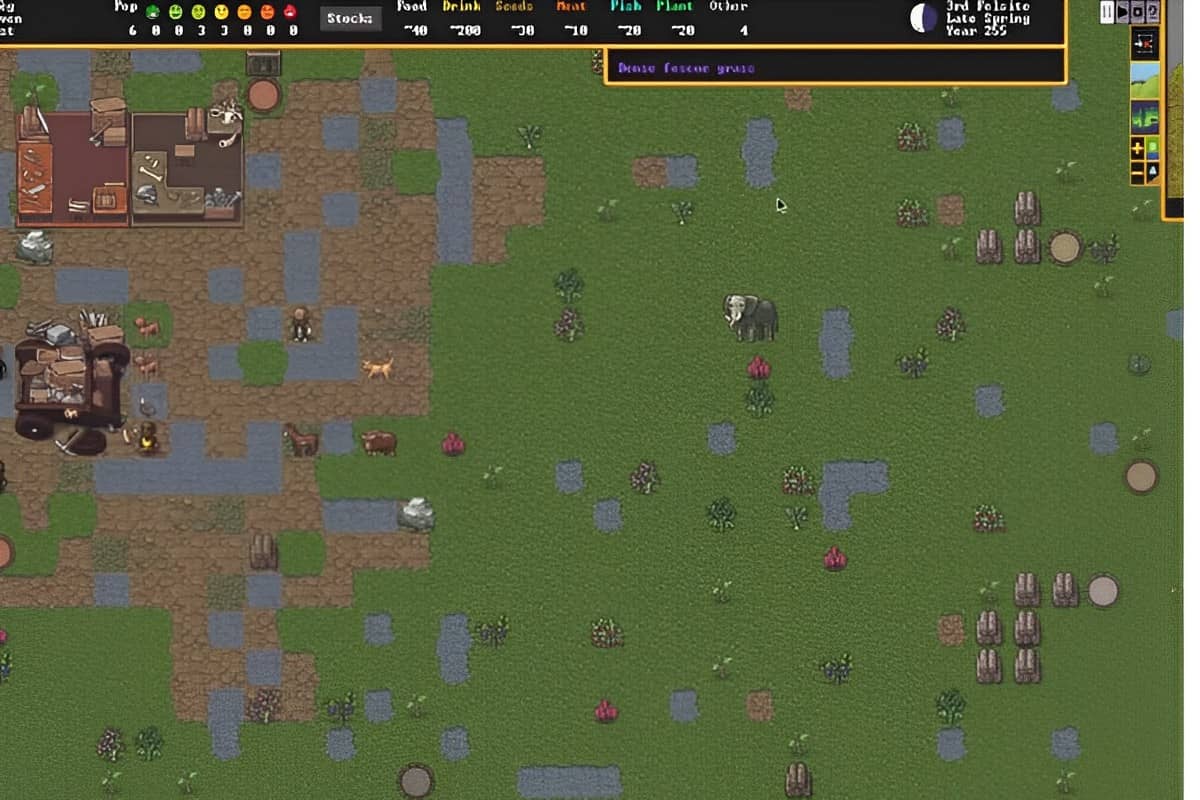As one of the most complex yet legendary colony management games in existence, Dwarf Fortress offers an immersive experience packed with dangers, creatures, and of course dwarves.

Dwarf Fortress Animals
If you’re a fan of this epic turn-based RPG, you’ll already know that animals can offer valuable resources for food, crafting, and even security purposes. Due to the vast number of Dwarf Fortress animals , it can be tricky to decide which ones you should capture and keep. To help you pick the best animals for your fortress, here’s a rundown of the most useful animals in Dwarf Fortress.
Sheep
Sheep are great sources of milk, wool, and meat, so you’ll want to get some of these woolly creatures early on in the game. They’ll need a decent-sized pasture for grazing, but they don’t eat as much grass as other, larger grazers like cows so they’re definitely worth having.

They can be found within dwarf and human populations, and in temperate grassland and temperate savanna. Female sheep (ewes) can be milked while male sheep (rams) have two horns that can be used for crafting or trading purposes. Every 300 days or so, you can shear them to craft cloth. And when you butcher sheep for their meat, you get a valuable little extra – wool!
Even though sheep are the smallest shearable creatures, their wool is equivalent in value to that of any other shearable animal. Given the amount of resources sheep provide, they are truly great animals to keep to help your colony grow and thrive.
Turkeys
If you’re thinking of picking a bird-type animal, the turkey is the way to go! These feathered friends produce the most eggs per clutch, followed by ducks, chickens, and guineafowl. All you need are a few nest boxes and your turkeys will be laying eggs in no time. Turkeys are also the largest in size, making them a better food source than other domestic poultry. They can be brought on embark and found in temperate forests, swamps, and shrubland.

Capture both genders, gobblers and hens, to breed poults and you’ll have the perfect turkey farm in no time! A word of caution – give them plenty of room and don’t confine them to small spaces otherwise they will start fighting. The only drawback to choosing turkeys is that they take two years to reach their full size – double the amount of time it takes for peafowl and geese to reach full maturity. Other than that, turkeys are great dwarf fortress animals to keep as they also provide leather when butchered, a valuable resource for your colony.
Pigs
Low maintenance and versatile, pigs are brilliant animals to start your game with. While both male pigs (boars) and female pigs (sows) provide meat and leather, only sows can be milked. If you don’t have much grazing space, no problem! Pigs can be kept underground because they don’t need to graze. They provide meat, milk, and leather, and require very little attention. Capture and breed a few of these swines and you’ll reap the benefits in no time!

Cats
With a couple of these feline friends by your side, you’ll no longer have to worry about pesky vermin as cats are great hunters. One or two will do, you don’t need an entire army… although an army of cats does sound fun (and chaotic)! On a more serious note, cats can quickly overwhelm your fortress if left unchecked. So avoid breeding too many of them if you can.
The only downside is that cats can’t be claimed as pets. They choose YOU. Cats will only choose dwarves who have a preference for them. Having cats around can prevent unhappy thoughts caused by vermin, but as a double-edged sword, cats can also be the cause of unhappy thoughts if something bad happens to them. For example, if a cat has attached to a dwarf and it dies, the attached dwarf will experience a drop in happiness. So if every dwarf in your fortress owned a cat, and they all perished in a natural disaster or siege, then all of your dwarves would experience unhappy thoughts.

Cats are pretty low-maintenance creatures in that they don’t require food, but they do tend to leave a mess for their owners to get rid of. Cats are naturally inquisitive creatures and so you’ll often find them roaming the halls of your fortress. When butchered, cats provide meat, bones and leather. Just make sure you don’t butcher an attached cat, otherwise, you’ll have a pretty sad dwarf to deal with.
Dogs
They’re man’s (or dwarf’s) best friends for a reason. These loyal companions can defend your fortress, chase down thieves and detect intruders or ambushers. So they’re handy to have around. Dogs are easily tameable and can be trained as either hunting dogs or war dogs, depending on your preferences.

Left to their own devices, dogs tend to roam around, spending most of their time in meeting areas, and attacking any hostiles they see. When assigned as a pet, it will follow the dwarf around. Note that dogs can’t be unassigned or placed in cages, but they can be pastured, which is a great way to keep them out of danger. Again, you don’t want a bunch of sad dwarves aimlessly wandering the fortress halls because their dogs died in battle!
Similar to pigs, dogs require no food and they’re very easy to maintain. They’re also a good source of food and can provide you with bones, leather, and skulls. So whether you want a comrade in combat or a hand with hunting, dogs are great animals to keep close by.
Elephants
As the largest domestic animal in the game, elephants are surprisingly trainable and make awesome war creatures. These mighty beasts are great battle allies and can only be defeated by well-armoured opponents, larger beasts, or top-tier weaponry. Elephants can either be traded or captured in the wild – they tend to inhabit tropical forests and shrubland.

While elephants are powerful and highly useful dwarf fortress animals to keep, you might want to hold off on capturing one until you’re a bit more established in the game. Elephants require a lot of space and need a lot of feeding, so make sure you’re well-prepared before getting one. Other than using these creatures for combat purposes, they offer a lot of useful resources once butchered.
Conclusion
Whether you want a mighty elephant to help conquer your opponents, a pack of loyal guard dogs to fight for your fortress, or a couple of cats to keep the rodents away, hopefully, this selection of Dwarf Fortress animals will help your colony grow and thrive.
